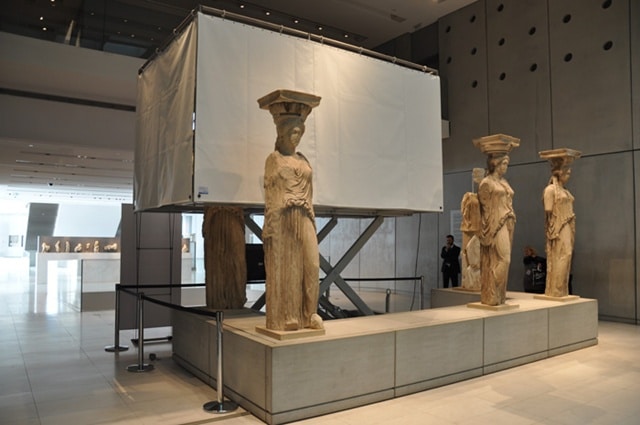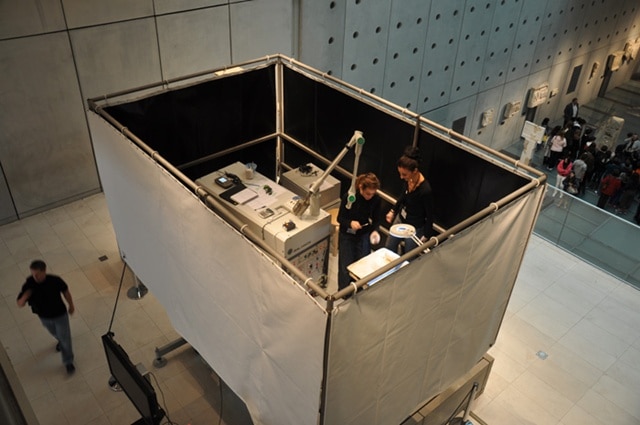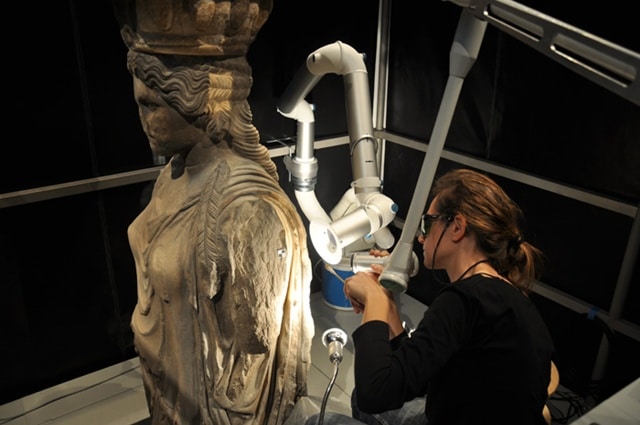Lasermet’s Laser Blocking Curtains in the Acropolis, Athens

Scientists carrying out restoration work in the Acropolis in Athens, Greece are using Lasermet’s laser blocking curtains to set up a laser laboratory in the public area.
The curtains provide a cost effective and easily portable method of laser blocking enabling the laser restoration work to continue. The Laser-Blocking Curtains are made from Lasermet’s specially- developed laser-blocking material which is supplied ready-made as either a ceiling or wall-mounted curtain. As the material is white on one side and black on the other, it will operate as a blackout blind / screen as well as a laser-blocking screen. Both sides block laser radiation although if the white side is used as the laser-blocking side an even higher specification of blocking will be achieved, making it suitable for higher power lasers. The material is fireproof and is certified to EN60825-4:1999
The customized laser system has already been used to restore priceless objects including the Parthenon West Frieze and the Metopes, but this is the first time that it has been open to the public.
According to the specialist team from Costas Fotakis’ group at the Institute of Electronic Structure & Laser (IESL-FORTH) in Crete that is carrying out the restoration, the combination of a fundamental 1064 nm and a frequency-tripled 355 nm beam from an Nd:YAG system is able to remove thick layers of pollution that have accumulated over nearly 25 centuries, without discolouring or damaging the marble surfaces below.
The infrared/ultraviolet technique has been in use for many years now, after initial attempts using just the fundamental wavelength caused a yellow discolouration.


In situ Preservation
Although similar artefacts have been restored with the dual- wavelength system previously, this is the first time that such treatment has been applied to the Caryatids, which were moved from their original site at the Acropolis to the museum as recently as 1979.
“The museum policy was to avoid any risky transportation of the masterpieces to a conservation laboratory, and instead perform any preserving activities in-situ,” explains the FORTH team.
To house the laboratory, the team built a special platform to “embrace” the sculptures and move them to different heights, so that the conservationists obtained optimum access along the surface of the sculptures.

